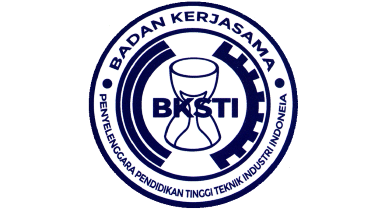Analisis Waktu Lampu Hijau, Kapasitas Kendaaran dan Derajat Jenuh di Simpang Empat Bersinyal
DOI:
https://doi.org/10.30737/jatiunik.v3i1.803Keywords:
Congestion, Degree of Saturation, Vehicle Capacity, WebsterAbstract
Congestion has a negative impact on motorists during certain hours. Therefore it is necessary to do an analysis related to traffic with the aim to find out the optimum time of green light, vehicle capacity and degree of saturation. Observations were carried out in the collection of data related to the cycle time of green light, yellow light and red light. Data was collected for 60 minutes at an intersection on Jalan Veteran (east), Jalan Veteran (west), Jalan Kawi and Jalan Penanggungan, Kota Kediri, using the Webster method. Data is processed in terms of saturation flow, traffic flow rate, lost time, optimum cycle time, effective green time, total effective green time, green light time for each phase, actual green time, capacity of each crossing arm and degree of saturation. The results of the study are in accordance with the objectives of the actual green time on the Veteran Road from the east by 10 seconds with a capacity of 389 (kend / hour), degree of saturation 0.93, Veteran Road from the west by 11 seconds with a capacity of 357 (vehicle / hour) , saturation degree 1,07, Jalan Kawi from the north for 8 seconds, with a capacity of 260 (kend / hour), saturation degree 1.21 and a Penanggungan from the south for 11 seconds, with a capacity of 357 (kend / hour), saturation degree 1.12.
Â
Kemacetan menimbulkan dampak negatif bagi pengendara kendaraan di jam – jam tertentu. Oleh karena itu perlu dilakukan analisis terkait lalu lintas dengan tujuan untuk mengetahui waktu optimum lampu hijau, kapasitas kendaraan dan derajat jenuh. Dilakukan observasi yaitu pengambilan data terkait siklus waktu lampu hijau, lampu kuning dan lampu merah. Dilakukan pengambilan data selama 60 menit di persimpangan pada Jalan Veteran (timur), Jalan Veteran (barat), Jalan Kawi dan Jalan Penanggungan, Kota Kediri, menggunkan metode Webster. Data diolah terkait arus jenuh, tingkat arus lalu lintas, waktu hilang, waktu siklus optimum, waktu hijau efektif, waktu hijau efektif total, waktu lampu hijau tiap fase, waktu hijau aktual, kapasitas tiap lengan persimpangan dan derajat jenuh. Hasil penelitian sesuai dengan tujuan yaitu waktu hijau aktual yang pada Jalan Veteran dari arah timur sebesar 10 detik dengan kapasitas 389 (kend/jam), derajat jenuh 0,93, Jalan Veteran dari arah barat sebesar 11 detik dengan kapasitas 357 (kend/jam), derajat jenuh 1,07, Jalan Kawi dari arah utara sebesar 8 detik, dengan kapasitas 260 (kend/jam), derajat jenuh 1,21 dan Penanggungan dari arah selatan sebesar 11 detik, dengan kapasitas 357 (kend/jam), derajat jenuh 1,12. Â
Â
References
W. Widodo, N. Wicaksono, and Harwin, “Analisis Volume , Kecepatan , dan Kepadatan Lalu Lintas dengan Metode Greenshields dan Greenberg,†J. Ilm. Semesta Tek., vol. 15, no. 2, pp. 178–184, 2012.
H. Yustianingsih and Istianah, “KAJIAN KORELASI TINGKAT KEPADATAN LALU LINTAS DI KOTA SEMARANG DENGAN KONSENTRASI CO DAN Pb,†Untidar, vol. 01, pp. 19–24, 2017.
M. Town, P. T. Adeke, A. A. Atoo, and A. E. Zava, “Traffic Signal Design and Performance Assessment of 4-Leg Intersections Traffic Signal Design and Performance Assessment of 4-Leg Intersections Using Webster ’ s Model : A Case of ‘ SRS ’ and ‘ B-Division ’ Intersections in Makurdi Town,†no. August, 2018.
S. J. A. Wesli, “Kajian Kebutuhan Lampu Lalu Lintas Pada Simpang 6,†vol. 3, no. 2, pp. 118–127, 2016.
C. Noval, I. A. Virgono, and R. E. Saputra, “Optimasi Lampu Lalu Lintas Cerdas Menggunakan Metode Webster,†e-Proeeding Eng., vol. 5, no. 3, pp. 6236–6243, 2018.
C. Ulfah, “Optimasi Pengaturan Lampu Lalu Lintas Kota Medan Menggunakan Graf dan Metode Webster,†Universitas Sumatera Utrara, 2018.
A. Verma, G. Nagaraja, C. S. Anusha, and S. K. Mayakuntla, “Traffic Signal Timing Optimization for Heterogeneous Traffic Conditions Using Modified Webster’s Delay Model,†Transp. Dev. Econ., no. 2, 2018.
V. Builenko, A. Pakhomova, and S. Pakhomov, “Optimization of the method for collecting source data to calculate the length of the traffic light control cycle,†Transp. Res. Procedia, vol. 36, pp. 90–94, 2018, doi: 10.1016/j.trpro.2018.12.048.
J. Setiabudhi et al., “Analisis Kinerja Simpang,†Fak. Tek. Sipil dan Lingkungan, Inst. Teknol. Bandung, no. 1506134, pp. 1–11, 2012.
A.- Desmi, L. A. Widari, and R. Yanti, “Efektifitas Model Karakteristik Arus Lalu Lintas Pada Ruas Jalan Simpang 4 Bireun (Perbandingan Dengan Metode Greenshield, Greenberg, Underwood),†Teras J., vol. 9, no. 1, p. 19, 2019, doi: 10.29103/tj.v9i1.178.
E. P. Kulo, S. Y. R. Rompis, and J. A. Timboeleng, “Analisis Kinerja Simpang Tak Bersinyal Dengan Analisis Gap Accaptance Dan MKJI 1997,†J. Sipil Statik Vol.5, vol. 5, no. 2, 2017.
A. Al-Kandari, I. Al-Shaikhli, and A. Najaa, “Comparative Study between Traffic Control Methods Using Simulation Software,†Int. J. Mach. Learn. Comput., vol. 3, no. 5, pp. 424–429, 2013, doi: 10.7763/ijmlc.2013.v3.353.
T. Tsuboi and N. Yoshikawa, “Traffic flow analysis in Ahmedabad (India),†Case Stud. Transp. Policy, vol. 8, no. 1, pp. 215–228, 2019, doi: 10.1016/j.cstp.2019.06.001.
S. Salini and R. Ashalatha, “Analysis of traffic characteristics of urban roads under the influence of roadside frictions,†Case Stud. Transp. Policy, vol. 8, no. September 2016, pp. 94–100, 2018, doi: 10.1016/j.cstp.2018.06.008.
Binamarga, “Manual Kapasitas Jalan Indonesia,†PU-NET, 1997. https://binamarga.pu.go.id/.
E. K. Morlok, Pengantar Teknik dan Perencanaan Transportasi. 1991.
N. A. Sudharta, “Penentuan Populasi dan Sampel didalam Penelitian,†widisudharta.weebly.com. .
M. P. Dr. Whidmurni, “Penelitian Kuantitatif,†Pemaparan Metod. Kuantitatif, 2017.
R. Pistolese, “The Webster Technique: A chiropractic technique with obstetric implications,†J. Manipulative Physiol. Ther., vol. 25, pp. E1-9, 2002, doi: 10.1067/mmt.2002.126127.
B. S. R. and N. V. H. Reddy, “Signal Design for T-Intersection By Using Webster ’ S Method in Nandyal Town , Kurnool District of Andhra Pradesh,†Int. Res. J. Eng. Technol., vol. 03, no. 04, pp. 1124–1131, 2016.
I. W. Kustanrika, “PERHITUNGAN SINYAL PADA SIMPANG DENGAN METODE WEBSTER,†J. Kaji. Ilmu dan Teknol., vol. 53, no. 9, pp. 1689–1699, 2013, doi: 10.1017/CBO9781107415324.004.
H. Wibisana and N. Utono, “Pemetaan Kecepatan dan Kerapatan Lalu Lintas di Ruas Jalan Arteri Kota Surabaya,†J. Tek. Sipil, vol. 12, no. 2, pp. 121–145, 2019, doi: 10.28932/jts.v12i2.1420.
R. Kayori and T. Sendow, “Kejenuhan Akibat Pengaruh Kecepatan Kendaraan Pada Jalan Perkotaan Di Kawasan Komersil (Studi Kasus: Di Segmen Jalan Depan,†J. Sipil …, vol. 1, no. 9, pp. 608–615, 2013.
Downloads
Published
Issue
Section
License
Information regarding Copyright and Licensing at JATI UNIK as follows:
- Licensed Use of Non - Commercial Articles will be governed by the Creative Commons Attribution license, which is featured on the Creative Commons Attribution Non-Commercial Share A Like 4.0 International License.
- The author guarantees that the articles published through JATI UNIK are original and do not contain statements that violate the law do not violate others' rights are subject to copyright, which is held exclusively by the author and free from the rights of third parties. The author is allowed to quote from various sources used for research and not to harm any party.
- JATI UNIK disseminates articles published with the rules set by Creative Commons. UNIK JATI license allows users to copy, distribute, display, and work for non-commercial purposes. Users also need to connect authors and JATI UNIK with the distribution of articles in journals.
- The Author rights, namely copyrights, ownership rights, patents, rights to use the substance of articles in the future, rights to reproduce articles for personal purposes and not to be traded, rights to conduct personal archives, rights to contract used for the non-exclusive distribution of articles published in the form a book and acknowledge the initial publication of the article originating from JATI UNIK.
- Suppose articles published by the author through JATI UNIK are compiled with other authors. In that case, it is necessary to create a form containing the authority of all authors involved in the article's production by including the agreement agreed upon by all authors in the article.
- The next point is, the agreement can be terminated if the author or JATI UNIK violates the agreement and cannot make repairs to the customer within a maximum of 2 months after being given information asking for the violation to be corrected. If there is no violation of the agreement, the license will automatically terminate and affect UNIQUE JATI UNIK.
- Regarding royalties, so far, if it is following applicable legal regulations, the author will waive his right to collect royalties on articles that have been licensed by JATI UNIK.
- In publishing the article, the editorial process is successful. JATI UNIK will continue it. JATI UNIK has the right to adjust articles related to punctuation, spelling, capital letters, references used, and usage adapted to JATI UNIK. The author acknowledges that the article can be published and accessed free of charge by the public.
Deprecated: json_decode(): Passing null to parameter #1 ($json) of type string is deprecated in /home/ojs.unik-kediri.ac.id/public_html/plugins/generic/citations/CitationsPlugin.php on line 68















